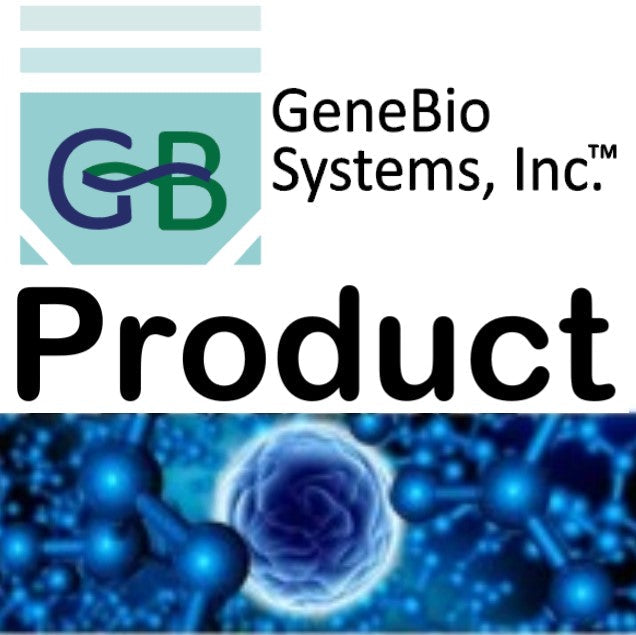Gene Bio Systems
Recombinant Human E3 ubiquitin-protein ligase NRDP1(RNF41)
Recombinant Human E3 ubiquitin-protein ligase NRDP1(RNF41)
SKU:CSB-EP880976HU
Couldn't load pickup availability
Size: 200ug. Other sizes are also available. Please Inquire.
In Stock: No
Lead time: 10-20 working days
Research Topic: Cell Biology
Uniprot ID: Q9H4P4
Gene Names: RNF41
Organism: Homo sapiens (Human)
AA Sequence: MGYDVTRFQGDVDEDLICPICSGVLEEPVQAPHCEHAFCNACITQWFSQQQTCPVDRSVVTVAHLRPVPRIMRNMLSKLQIACDNAVFGCSAVVRLDNLMSHLSDCEHNPKRPVTCEQGCGLEMPKDELPNHNCIKHLRSVVQQQQTRIAELEKTSAEHKHQLAEQKRDIQLLKAYMRAIRSVNPNLQNLEETIEYNEILEWVNSLQPARVTRWGGMISTPDAVLQAVIKRSLVESGCPASIVNELIENAHERSWPQGLATLETRQMNRRYYENYVAKRIPGKQAVVVMACENQHMGDDMVQEPGLVMIFAHGVEEI
Expression Region: 1-317aa
Sequence Info: Full Length
Source: E.coli
Tag Info: N-terminal GST-tagged
MW: 62.9 kDa
Alternative Name(s): RING finger protein 41
Relevance: Acts as E3 ubiquitin-protein ligase and regulates the degradation of target proteins. Polyubiquitinates MYD88. Negatively regulates MYD88-dependent production of proinflammatory cytokines. Can promote TRIF-dependent production of type I interferon and inhibits infection with vesicular stomatitis virus. Promotes also activation of TBK1 and IRF3. Involved in the ubiquitination of erythropoietin (EPO) and interleukin-3 (IL-3) receptors. Thus, through maintaining basal levels of cytokine receptors, RNF41 is involved in the control of hematopoietic progenitor cell differentiation into myeloerythroid lineages. Contributes to the maintenance of steady-state ERBB3 levels by mediating its growth factor-independent degradation. Involved in the degradation of the inhibitor of apoptosis BIRC6 and thus is an important regulator of cell death by promoting apoptosis. Acts also as a PARK2 modifier that accelerates its degradation, resulting in a reduction of PARK2 activity, influencing the balance of intracellular redox state. The RNF41-PARK2 pathway regulates autophagosome-lysosome fusion during late mitophagy. Mitophagy is a selective form of autophagy necessary for mitochondrial quality control
Reference: "Hypothetical protein SBBI03." Zhang W., Cao X., Wan T., Yuan Z., He L., Li N., Zhu X., Tao Q. Submitted (JUL-1998)
Purity: Greater than 90% as determined by SDS-PAGE.
Storage Buffer: Tris-based buffer,50% glycerol
Storage: The shelf life is related to many factors, storage state, buffer ingredients, storage temperature and the stability of the protein itself. Generally, the shelf life of liquid form is 6 months at -20℃/-80℃. The shelf life of lyophilized form is 12 months at -20℃/-80℃.
Notes: Repeated freezing and thawing is not recommended. Store working aliquots at 4℃ for up to one week.


